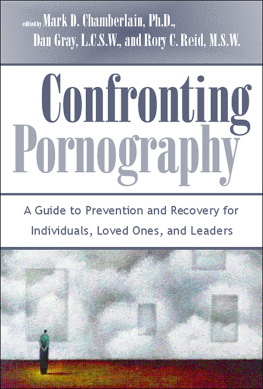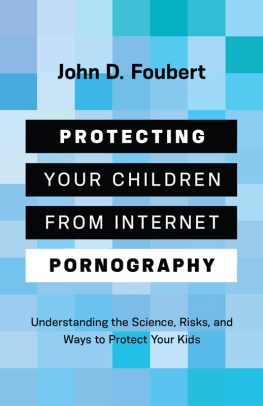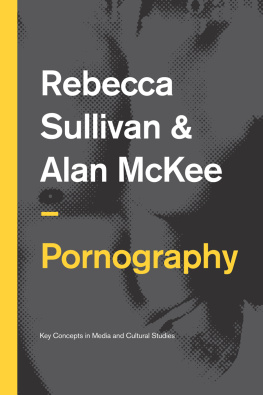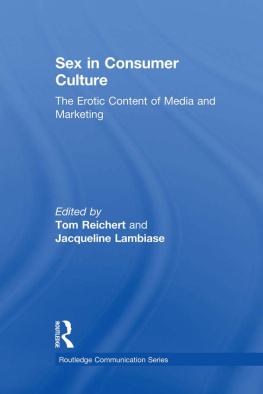For Andrea

Contents

INTRODUCTION
A deep link exists between pornography and the tools and techniques of human communication. For forty millennia, pornography and sexual depiction have been a powerful source of creativity and innovation that has spurred the development of many new media. Creators and consumers of sexual content have been the driving force behind communications developments as diverse as streaming Internet video and the concept of beta testing software. In other casesfor example, the VCR, cable television and many Internet applicationspornographers were the technological pioneers who figured out how to make money from a new medium before the mainstream saw any profit potential. The pornography industry has also played an important role in familiarizing people with new mediamotivating them to figure out how to use their cable box or UHF dial, or to master the intricacies of a modem or a webcam. Those who work in the pornography industry have also been business innovators, developing customer service models, secure transaction systems, distribution networks and marketing tools that mainstream companies later emulated.
Pornographys powerful influence over communicationsa driving force of innovation that I refer to as the Erotic Engine has contributed to many of the great tools and toys that consumers enjoy today. You might never have looked at a dirty picture in your life, but if you use search engines like Google and Yahoo!, online retailers like Amazon and eBay, video- and photo-sharing sites like YouTube and Flickr, and many other integral components of modern media, you have benefited directly from pornographys influence both on the infrastructure of the Internet itself and on specific technological and business innovations. Video games, smartphones, media playerseach owes its own debt to pornography.
In the modern era, the reason for this link seems straightforward. Consumers of pornography like to buy and use their product anonymously. Every recent advance in technology has made media consumption more private and more convenient. Its small wonder that pornographers were early adopters of the VCR, which meant that customers no longer had to venture out to triple-X cinemas, which were often located in rough neighbourhoods and always came with the risk of being spotted. It makes sense that cable television would benefit from being able to pipe pornography directly into peoples homes. And the Internet, of course, offered such convenience and secrecy that pornography couldnt help but dominate its explosive development.
There is more to the pornographytechnology link, though, than coming up with better ways not to get caught. For one thing, pornography has played a major role in many media in ways that have nothing to do with anonymity or convenience. Photography, for instance, had barely come into existence before people started to make and sell erotic pictures. Pornography drove the growth of the photographic industry not thanks to better privacy but because it offered a new kind of eroticavoyeuristic, realistic and unlike any form of sexual representation that had come before. Photography was inherently exciting (to a certain market) because it was a new means of expressing one of the fundamental forces of human nature: sexuality, passion and intimacy.
Since at least the 1840s, when the first erotic photographs appeared, the link between pornography and communications has been financial. Pornography consumers have a greater-than-average willingness to try out new technologies and to pay a premium to get their product in a new way. From photography forward, that willingness helped support many new technologies through their pornographic years until other, slower-developing non-sexual applications could gain a popular foothold. In the past half century, this influence has become so pronounced that one business model holds that any new communications technology should consider appealing to the pornography market in its early days. Pornographers are early adopters who will see a new medium through its rough early stages until it is ready for mainstream markets.
Pornographys influence goes back even further, though, and has affected innovations in communication in ways that go even beyond money. In fact, from the earliest known examples of human beings using a medium to express themselvespainting, carving, drawingsexual representation has been at the heart of advances in communication. It has never stopped. Media that have been influenced by sexual depiction include (but are not remotely limited to) forty-thousand-year-old cave drawings, six-thousand-year-old Mesopotamian reliefs, traditional Japanese woodblock prints, Hindu temple carvings, medieval European music, early output from the Gutenberg press, millennia-old Chinese sculptures, drawings, oil paintings, watercolours, daguerreotypes, photographs, dime novels, films, videos, velvet paintings, DVDs, phone-sex lines, cable TV, video-on-demand services, playing cards, video games and every nook and cranny of the Internet.
Throughout history, across cultures, and in every part of the world, whenever a new means of communication emerged (with the possible exception of smoke signals), people adopted it and adapted it so as to find new ways to produce, distribute and consume pornography.
In the world of fine art, where styles, media and methods change from generation to generation, nudity and sexuality have never diminished as a driving creative force. Folk tales, ancient legends and religious myths are laced with sex, ribaldry and passion. Modern sex shops and websites carry such quantity and variety of pornography, it seems impossible that portraying the act of sex could still lend itself to new themes and variations and yet there is never a shortage of new product. This never-ending stream of innovation speaks to something deeper and more fundamental about pornography that extends beyond the basics of prurience and business. Even in the modern era, some of the most interesting ways that pornography shaped the Internet and other high-tech developments had less to do with money than with a widespread and powerful desire to find new ways to manifest sexual expression.
The links between pornography and communications innovations are complex enough on their own, but they are further muddled by the strong feelings the subject matter often engenders. Advocates of pornography sometimes treat the matter with a wink and a nod, and sometimes with no small amount of bitterness. Many who work in the porn industry decry the hypocritical mainstream for dismissing and marginalizing pornography while reaping the benefits of their technological contributions. Time and again, entrepreneurs who hone their technologies, techniques, skills and business models in the adult-entertainment world must conceal this past before selling these tools to the rest of the world. At the same time, many tell tales of mainstream companies like Google, Yahoo! and even Disney hiring from within the adult industry in a bid to find employees at the bleeding edge of new technology.
Critics of pornography, on the other hand, sometimes regard the material as so destructive and offensive that they cant or wont accept that the industry has even an iota of merit. If it were not for the subject matter, pornography would be publicly praised as an industry that has successfully and quickly developed, adopted, and diffused new technologies, writes Jonathan Coopersmith, one of the foremost researchers on pornographys influence on media technology, in Sex, Vibes and Videotape. But because the subject matter was pornography, silence and embarrassment have been the standard responses.














 Contents
Contents 